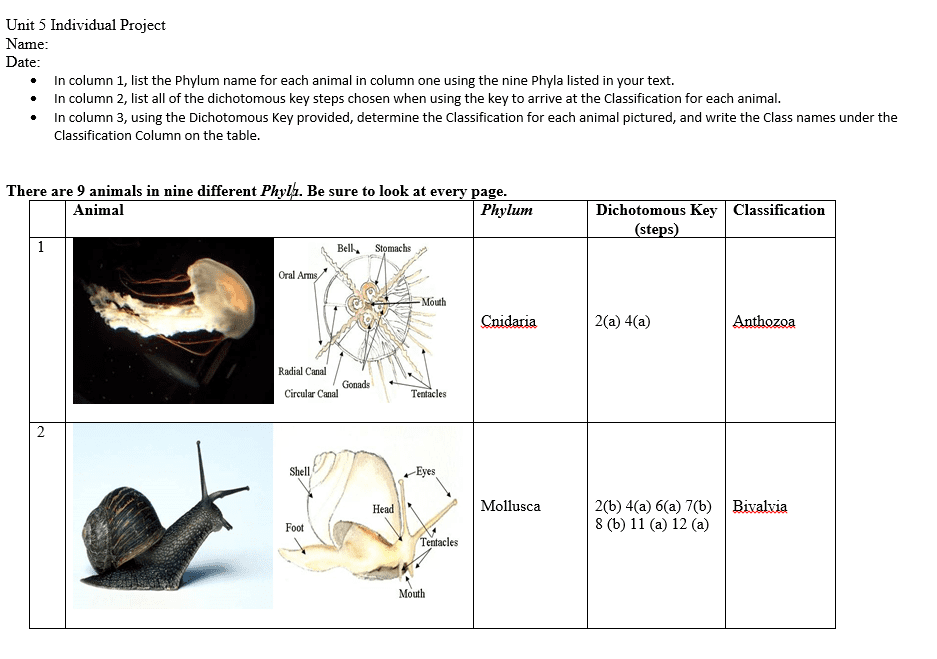Taxonomic classifications based on differences and similarities of their traits
biology studies
Animal Kingdom
Organisms are placed in taxonomic classifications based on differences and similarities of their traits. If you know what critical traits to look for, it is possible to separate any animal into a taxonomic category using a dichotomous key.
The common taxonomic categories are Domain, Kingdom, Phylum, Class, Order, Family, Genus, and Species (Specific Epithet). This assignment will explore the Phylum and Class categories.
The assignment document contains a table with nine images. The images are examples of nine different animal phyla: Porifera, Cnidaria, Nematoda, Arthropoda, Platyhelminthes, Annelida, Mollusca, Echinodermata, and Chordata.
In column 1, determine and list the correct Phylum name for each animal using the nine Phyla listed in your text.
In column 2, using the dichotomous key provided, determine the class for each animal. List all of the dichotomous key steps chosen when using the key to arrive at the class for each animal.
In column 3, the Classification Column, write the class name for each animal from the dichotomous key provided and your key steps.
First download U5 Animal Table 2018 document.
Next, download the Dichotomous Key document.
Use the dichotomous key to determine the class category, as shown for each animal (picture), and write the class names under the Classification Column on the table.
For help on how to use the dichotomous key, download and review the document called How to Use the Dichotomous Key.
Solution preview for the order on taxonomic classifications based on differences and similarities of their traits
APA
193 words
